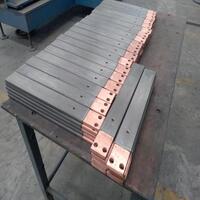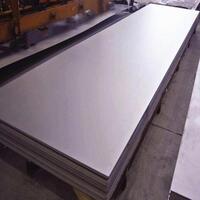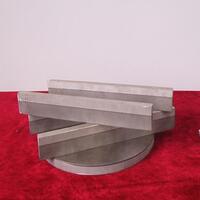1. Introduction
If you’ve ever admired a sleek modern building with shimmering panels or noticed a rustic brown facade that seems to age beautifully over time, chances are you were looking at a metal clad structure. But what exactly does ‘metal clad’ mean? In simple terms, metal clad refers to any surface—whether it’s a wall, roof, pipe, or even electrical cable—that’s covered or ‘clad’ with a layer of metal. This technique combines functionality with aesthetics, offering durability, weather resistance, and striking visual appeal.

From metal clad houses featuring corten steel siding to industrial settings using aluminum clad pipe insulation, the applications are vast. Let’s break down what metal clad really means, where it’s used, and why it’s become so popular across architecture and engineering.
2. What Does ‘Metal Clad’ Mean?
The term ‘metal clad’ (sometimes written as ‘metalclad’) describes a composite material or object where one metal is bonded to another—often for enhanced performance, corrosion resistance, or cost efficiency. The phrase ‘clad metal meaning’ typically refers to this layered structure: a base metal (like steel) coated or bonded with a more resilient or decorative metal (like stainless steel, copper, or zinc).
For example, aluminum clad steel wire uses a steel core for strength wrapped in aluminum for conductivity and corrosion resistance. Similarly, stainless clad aluminum or aluminum clad stainless steel blends the best properties of both metals. This concept extends beyond wires—it’s foundational in everything from metal nameplates to boiler plate steel.
3. Common Types of Metal Clad in Construction
In architecture and building design, ‘metal clad‘ most often refers to exterior finishes. Popular choices include:

- Metal clad wall systems using corrugated steel facade or standing seam siding
- Metal clad roof options like zinc clad roof, colorbond standing seam, or pac clad standing seam roof
- Facades made from corten steel facade, copper siding, or zinc metal siding
These materials aren’t just stylish—they’re practical. A metal clad building can withstand harsh weather, resist fire, and require minimal maintenance. Vertical standing seam metal siding and exterior corrugated metal siding are especially favored for their clean lines and longevity.
Designers also love experimenting with textures and patinas. Corten steel siding, for instance, develops a rust-like appearance that stabilizes over time, eliminating the need for painting. While corten siding cost may be higher upfront, its lifespan and low upkeep often justify the investment.
4. Industrial and Technical Uses of Clad Metals
Beyond aesthetics, clad metals play a critical role in industrial applications. Aluminum clad pipe insulation protects against heat loss while resisting corrosion. Metal clad electrical wire—also called armored cable—is commonly used in commercial buildings for its durability and safety.
Other specialized forms include:

- Titanium clad components for aerospace or chemical processing
- Copper nickel clad or cupro nickel clad for marine environments
- Alloy clad sheets like 2024 T3 clad or 7075 T6 clad used in aircraft manufacturing
Even metal plates benefit from cladding. Stainless steel plate, mild steel plate, or carbon steel plate might be overlaid with chrome carbide or Inconel weld overlay for extreme wear resistance in mining or power generation.
5. Popular Materials and Finishes
Different projects call for different metals. Here’s a quick look at some favorites:
- Corten steel plate: Ideal for outdoor sculptures and facades due to its weathering properties
- Zinc facade and zinc clad dormer: Offers a soft gray finish that ages gracefully
- Aluminum clad sheet (or aluminium clad sheet): Lightweight and corrosion-resistant, great for roofing and siding
- Stainless steel metal plate (including 316 stainless steel plate or 304L variants): Used where hygiene and strength matter, like in food processing or labs
- Diamond plate steel or aluminum diamond tread plate: Adds slip resistance for stairs, ramps, and vehicle flooring
Finishes can be enhanced through processes like electroplating, chromium electroplating, or electroless nickel coating—adding layers of protection or decorative appeal like gold coating or chrome metal sheen.
6. Why Choose Metal Clad?
Metal clad solutions offer a rare blend of form and function. They’re:
- Extremely durable against wind, rain, UV exposure, and temperature swings
- Fire-resistant and non-combustible
- Recyclable and sustainable—many metal cladding products contain high recycled content
- Customizable in color, texture, and profile (e.g., pac clad column covers, pac clad coping, or pac clad HWP panels)
Whether you’re building a metal clad shed, a steel clad house, or a high-end commercial tower with a standing seam facade, metal cladding delivers long-term value.
7. Conclusion
So, what is metal clad? It’s more than just a buzzword—it’s a smart, versatile approach to design and engineering that spans from the roof over your head to the wires in your walls. Whether you’re considering a metal clad wall for your home, comparing corten steel siding cost, or specifying clad steel for an industrial project, understanding the range of options—from aluminum clad stainless steel to titanium clad plates—helps you make informed, future-proof decisions. With its mix of resilience, beauty, and innovation, metal clad is here to stay.
Our Website founded on October 17, 2012, is a high-tech enterprise committed to the research and development, production, processing, sales and technical services of ceramic relative materials such as What. Our products includes but not limited to Boron Carbide Ceramic Products, Boron Nitride Ceramic Products, Silicon Carbide Ceramic Products, Silicon Nitride Ceramic Products, Zirconium Dioxide Ceramic Products, etc. If you are interested, please feel free to contact us.
